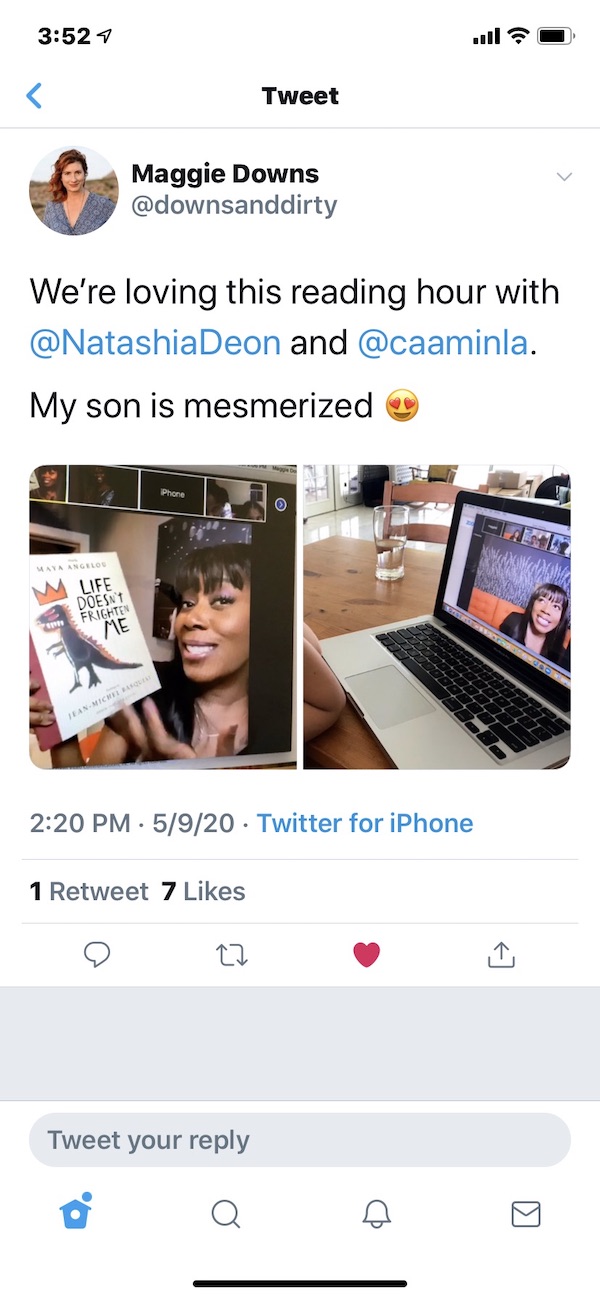How has exhibition scheduling been changed and how are you adapting? Are your exhibitions virtual-only now?
COVID-19 became a serious concern in California just as we were changing out our exhibitions for the spring season. One of CAAM’s new exhibitions, “Sula Bermúdez-Silverman: Neither Fish, Flesh, Nor Fowl,” opened only two weeks before we closed the museum, so few people had a chance to see it in person. Another, “Sanctuary: Recent Acquisitions to the Permanent Collection,” was set to open March 18, and two more were to have opened in April.

George O. Davis, CAAM Executive Director. Photo by HRDWRKER.
For the exhibitions that are fully installed, we’ve added as much online content as possible, including slideshows of object and installation images, interviews with artists (some filmed before the closure, others recently conducted via Zoom), and video walkthroughs, all of which we share on the museum’s website and on our robust social media platforms.

Sula Bermúdez-Silverman: Neither Fish, Flesh, nor Fowl at CAAM. Photo by Elon Schoenholz.
In what ways are you engaging and staying in touch with your fans and members?
Right now, we stay in touch with our supporters and let them know about our online programmatic offerings via our monthly email and frequent posting on social media.
Our education staff pivoted early to move online whatever spring programs we felt would adapt well, whether than meant conversations now held on Zoom or book reviews and readers’ guides now available on our blog for CAAM’s book club. In early April we held a popular Instagram Live dance party with The Beat Junkies in lieu of our spring opening, “Can’t Stop Won’t Stop”—we called it “Can’t Stop, Really Won’t Stop.”
We’re also partnering with other institutions to enhance our online offerings. For example, a recent Zoom children’s story hour was conceived in collaboration with PEN America and featured author Natashia Deón reading books by Maya Angelou and Jacqueline Woodson. And via our status as a Smithsonian Affiliate we were a presenting partner for an online lecture about Michael Jordan by Smithsonian sports curator Damion Thomas.
We’ll continue to offer a selection of online programs—or perhaps a hybrid of in-person/online—until we can welcome groups of visitors back into the museum for public programs.
Do you think you will open in the fall? What regulations do you think you’ll implement to make museum visitation safer?
It’s difficult to tell at the moment as the authorities are constantly updating the guidelines and learning more about the virus. Like most cultural institutions, we await word from government authorities regarding how and when we can reopen. Additionally, as a state museum, our policies sometimes differ from LA County guidelines. Initially, we will make our galleries available for distanced visits.

Sanctuary: Recent Acquisitions to the Permanent Collection at CAAM. Photo by Elon Schoenholz.
What’s your opinion of the new virtual trend for museums? How can museumgoers help support CAAM during this difficult time?
Actually, I think the new virtual trend for museums is great. In the past we considered digital engagement mainly as a marketing tool to get visitors to the museum. We now recognize that we’ve gained supporters from our recent pivot, some of who may never physically come into the space. I believe we will have more of a dual programming operation going forward: in-person and online.
In the past five or so years we’ve developed a dedicated, passionate, diverse community of visitors; they truly are our #CAAMFam and it’s gratifying to have our institution be an important hub for African Americans as well as LA’s larger cultural community. We ask everyone to continue to engage with us online until such time as we can welcome them back in person, as well.

Sula Bermúdez-Silverman: Neither Fish, Flesh, nor Fowl at CAAM. Photo by Elon Schoenholz.
Are openings now a thing of the past and can you foresee a new trend for announcing new shows instead of the traditional opening?
Clearly large openings are not a thing of the present! It’s a little sad because the energy was so great at our large openings and other public programs. Our community loves to warmly embrace friends and guests. I’m hopeful that the day will come when we can once again welcome large groups back to CAAM to celebrate our exhibitions and experience our programs. Our openings and other large gatherings, like on MLK Day, are truly special community events. Until then, we’ll experiment with ways to celebrate new exhibitions safely.

Cameron Shaw, Deputy Director and Chief Curator, interviewing Wesley Morris. Photo by HRDWRKER.
Is there anything surprisingly positive you have noticed so far for the museum world as we know it today? Or something you feel you or we all could learn from this?
A silver lining is that we’ve all had time to slow down a bit and reflect on our individual impact on the planet. Like never before, we are all tied together by globalism and digital communications. We were moving at warp speed and have been forced to slow down. I hope that we will focus more on the people and stories that really matter in our society.


